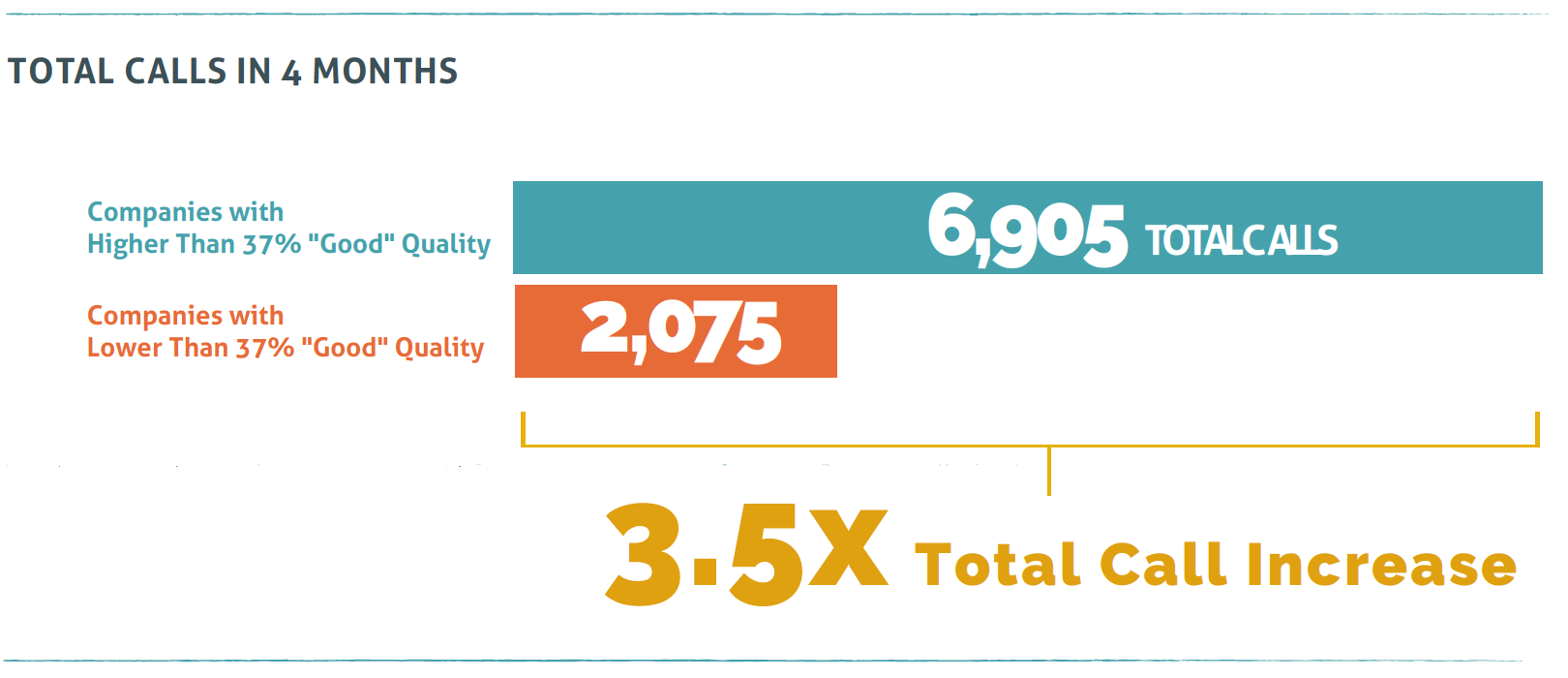
“It’s video conferencing, it’s not supposed to work.” Did that make you chuckle? Me too. Kudos to this clever (yet snarky) survey response from an IT video conferencing professional. However, this comment says a lot. We all well know there’s not a darn thing that’s easy or proactive about improving video call quality or overall performance. Support tickets and user complaints pile up, and most professionals are throwing up their hands.
You’ll be happy to know that there is a secret video call quality formula. It’s quite likely you’re looking at the wrong data, lacking benchmarks, and incorrectly measuring things without knowing.
Good thing we just published a comprehensive guide to improving video call quality so you can quickly start looking like a total boss around the office.
DeBunking the “There’s No Demand” Excuse
There’s no denying video call quality is the center of the video conferencing world. If a tool doesn’t work well, no one will be using it – ever. And if no one is using your video conferencing technology, your large-scale investment is being wasted.
No one wants to be that guy (or gal) who is responsible for managing a productivity tool that’s draining the company.
You may disagree, but the demand for video collaboration tools among users is strong. PRNewswire’s recent headline read, “Mobile Unified Communications and Collaboration Market Worth $17.38 Billion by 2019.” The demand is there, you just have to meet it. If you’re currently experiencing low employee adoption rates, it’s pretty safe to assume you have either an internal education issue or your system isn’t performing as well as it should.
And that’s on you.
So, we went ahead and gathered several methods that will help you better segment your current data to evaluate just how much demand there is for video in your company.
Some Hard Data for the Skeptics
Since we’re a video conferencing analytics company, we ran some reports to confirm whether or not companies with high-quality performance (by Vyopta’s quality benchmarks) had higher employee adoption rates.
Turns out, we were right.
We pulled the last four months of data from our product and focused on companies making video calls only. We segmented out any video calls with only audio, content sharing, etc. Naturally, we wanted to make sure this was a clean fight. We were left with a healthy, blended group of medium to large companies. Of these final 33 companies, a total of ~339,000 video calls were made within four months. Again, based on Vyopta’s video call quality benchmarks, a special formula that combines packet loss and jitter(we share our secret recipe in our guide), we found only ~126,000 video calls qualified as having “good” quality performance.
So, to get to the good stuff, we deemed only 37% of video calls made in four months as having “good” video call quality. Those companies with higher than 37% “good” quality, made 3.5x more total calls than those who did not.

Now, this is just an initial insight. Yet, for you skeptics out there who think improving video call quality has no real benefit, it’s looking like you were wrong.
Improving Video Conferencing Call Quality (or Bust)
In our survey, we asked how IT teams are currently tracking video call performance. As expected, the top methods are entirely reactive. Support tickets and general sentiment from the IT team resulted in 58% of total survey responses. Meanwhile, 31% leverage network monitoring tools and 11% don’t track video call performance at all.
Scary.
Getting ahead of the video conferencing and collaboration curve will be impossible by only using these tactics. Yet, we know, “it’s tough to make a difference in such a large, mish-mash environment.” You also have more important things to do, or do you thought before reading this post.
In our report, we’ll share:
- data segmentation tips so you’re focused on the right metrics
- achievable video quality goals and benchmarks
- a mini guide to save helpless, end-users from themselves
- our secret formula, “Bad Video Call Quality vs Company Productivity”
- …and other juicy nuggets of wisdom
We hope you enjoy! Let us know what you think in the comments section below or on our social media channels. We’ree ready and waiting to discuss.


.png)
.png)